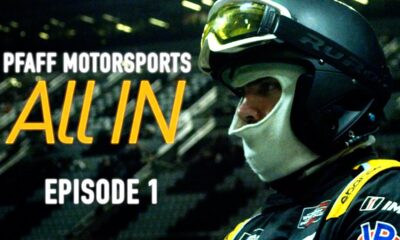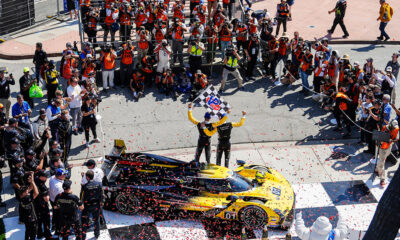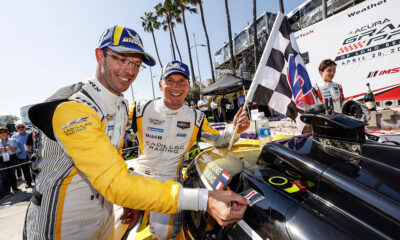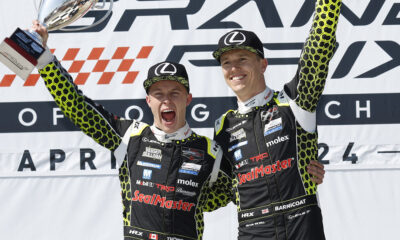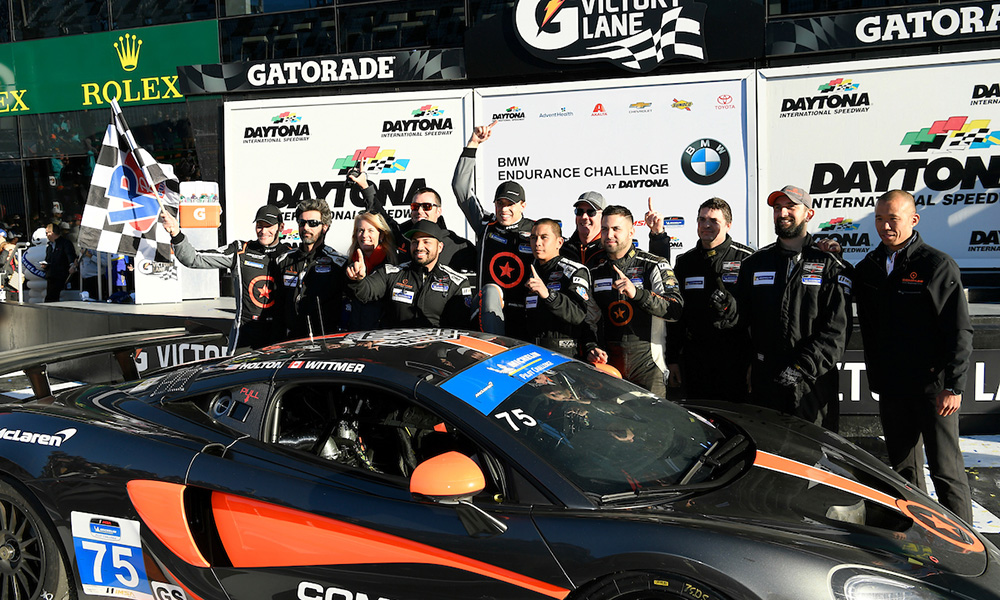
Photo: Michelin
Engineers are among the most vital members of an IMSA race team. Their years of experience can help a team progress forward race-by-race and in many cases, help sort new cars.
Sportscar365 caught up with three veteran engineers to reflect on their backgrounds, why they got into engineering in the first place and how they’ve enjoyed working with new cars and tires in 2019 in the latest “Michelin Inside the Role.”
*Jeff Braun, engineer, No. 54 CORE autosport Nissan DPi
*Ray Lee, technical director, Compass Racing, No. 75 McLaren 570S GT4 (GS) and No. 76 McLaren 720S GT3 (GTD)
*Tom Brown, engineer, No. 50 Juncos Racing Cadillac DPi-V.R
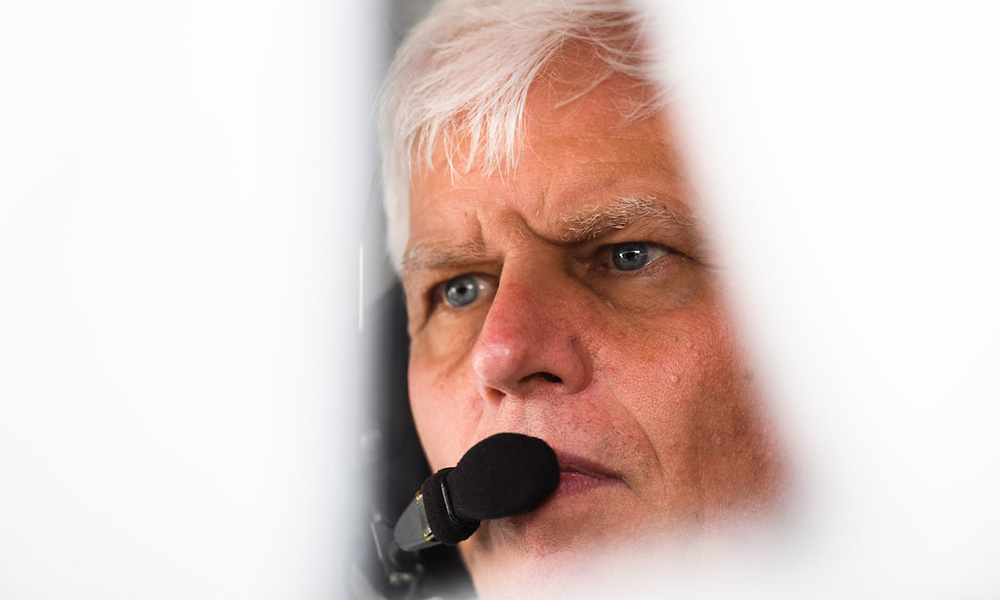
Photo: CORE autosport
What piqued your interest in studying engineering and becoming a race engineer?
Jeff Braun: “When I was 5 years old, my Mom and Dad looked at houses and one they looked at had a go-kart in the garage. I was along, and wanted to buy the house for that kart! It turns out the kid raced it at Dousman, Wis. and we did in fact buy the house, but the kart didn’t come with it! So my Dad bought me a kart, and then did either the best or worst thing to me. He said I could race when I could go faster than the track record for my class at Dousman. By the end of the summer I was faster than the best kids out there. We went to my first race at the end of the summer, and won! I was hooked for life.
“Later when I was racing my Triumph Spitfire as a 16-year-old in Canada, I was reading everything I could get my hands on to help me make it go faster. Physics books, and race engineering books (which were limited back in 1974), and I decided to go to engineering college for only one reason, to help me figure out how to make race cars go faster.”
Ray Lee: “The competition. I have a sporting background and have always been driven to compete and be the best.”
Tom Brown: “I’d started off working for the Ministry of Defense, a few decades ago, in the U.K. as a Naval Architect on Warship design, but I had a passion for motorsports. I started my engineering degree in Mechanical Engineering, and then morphed into Naval Architecture.
“I had a passion for motorsports… but I ran out of driving talent before I ran out of money, so I stuck to engineering.
“Through some business and racing I met some folks from Penske Cars, got chatting and before I knew it I’d resigned from the MOD and started a venture into motorsports. I’m not sure how I told my wife I gave up a solid career there to ‘go racing!’ I spent a few years as a design engineer with Penske Cars before my first shot at race engineering. I think it’s a shame more young race engineers don’t get the opportunity to design before they touch the headsets.”
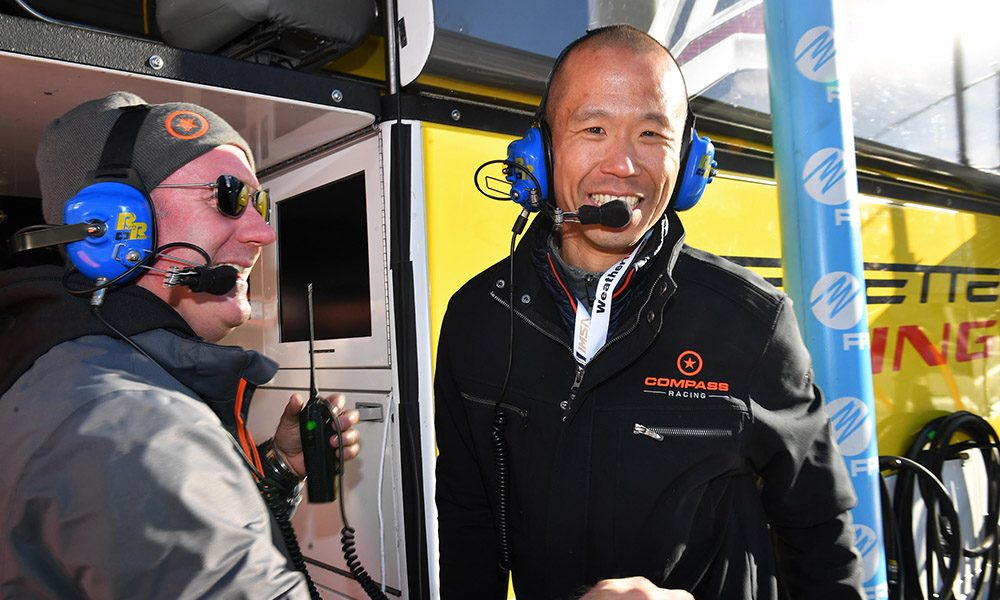
Photo: Compass Racing
When you have to learn a new element, whether it’s a new car, new tire or other updates to the chassis, how do you prepare for that learning?
JB: “Well, I haven’t run the same car two years in a row for the past seven years. It’s been a Level 5 LMP2, Level 5 Ferrari GTD, and Mazda P2 with SpeedSource before CORE. Then with CORE we’ve run the Oreca LMPC, Porsche GTD, Oreca LMP2 and now Nissan DPi cars. So, I should be good at it, but I’m not sure!
“All I can do is get the data and information from the car manufacturer like aero data, suspension geometric locations, weights and compare that to all the cars I’ve run to see similar versus different areas.
“This year I have a new chassis in Ligier, new engine with Nissan and new tire with Michelin. But I’ve done some Ligier LMP3 engineering work and there are some similarities there. The Michelin tire (there) is used in Europe on the Michelin Le Mans Cup LMP3 cars, and Colin drove in that series last year, so we’ve had long discussions about it.
“You have a good guess… then you go to the track and see how wrong you were! The questions are always the same, but the answers are always different.”
RL: “Testing is key. With tires, it’s really about testing the product. And with new equipment, it’s also about testing. With the new 720S GT3 program, we also have a lot more resources involved so while testing is critical to the development of the chassis it’s also important that we learn to utilize the extensive amount of manufacturer support that’s provided.”
TB: “It used to be we raced what we designed. So getting a new car, tire, engine or aero package wasn’t infrequent. It used to be a new package almost every race in my early career! I relish the fun of something new to sink my teeth into, and it keeps the interest high.
“The process now is the same as with any new car. Start with the fundamentals, study the aero, find the window, get there mechanically and see how it all works with the tires. Be proactive with your partners and talk to as many other engineers and partners as possible to forge a good alliance. Don’t assume anything; always question, ‘Why, how and how much.’
“We have good simulation suites now and we need to go through it with our drivers. Ultimately, they have to make it work.”
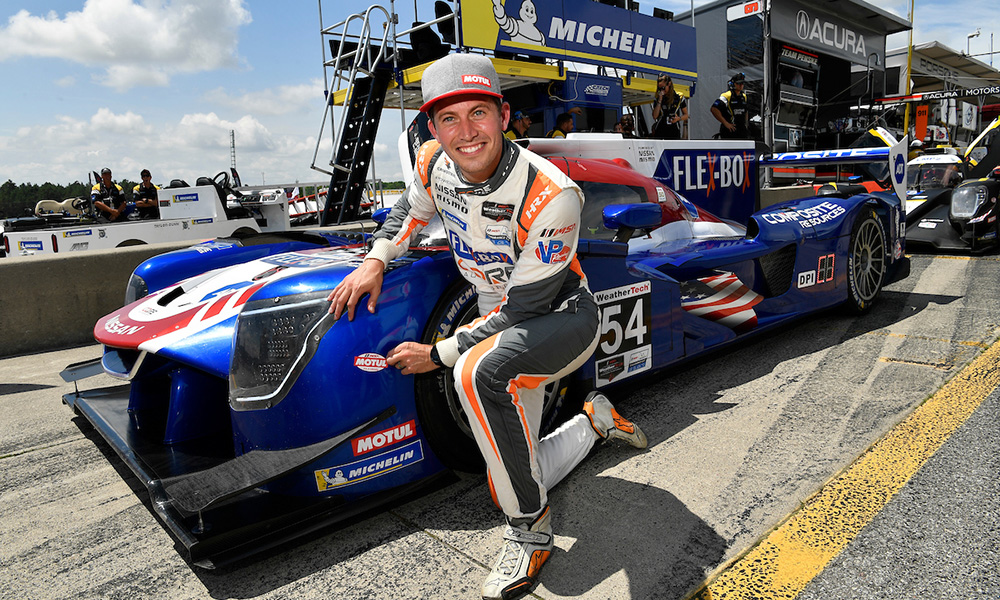
Photo: Michelin
How do you interact with drivers that may have different driving styles to best optimize a setup for them that the rest of the crew can carry out?
JB: “This is what I love about sports car racing. The compromise and work it takes to get the best car for two, three or four drivers. At CORE I am lucky as Jon Bennett has been coached by Colin for something like eight years now and he likes what Colin likes in a car, so we just set it up for Colin and Jon will get his best out of it.
“Then when we have what I would call a ‘guest’ driver like Romain Dumas and Loic Duval. It’s really easy also, because these guys are top pros, some of the best drivers in the world, they understand it’s Colin’s car and he has the most time in it and are happy to drive the car pretty close to what he likes, knowing it’s been sorted. We will always change it slightly to suit everyone though. But there is never any issue as they all just want to win and don’t care if they have to adjust a little to make it better for the group.”
RL: “Luckily, for this year, our driver pairings in both cars (Paul Holton and Matt Plumb in GTD, and Holton and Kuno Wittmer in GS) are equally fast so setup, whether in the GT4 or GT3, is fairly straightforward.
“In prior years, I’d setup the car to the fastest drivers which meant that the car was setup for the Pro and the Am driver had to get used to the Pro’s setup.”
TB: “Every driver is different and you have to understand their needs, and don’t try and change them. It helps if, as an engineer, you understand what they are facing. I always believe a good race engineer needs to have raced.
“In the sports car arena, the drivers (Will Owen, Kyle Kaiser, Rene Binder, Augustin Canapino and Victor Franzoni thus far) work very closely with each other. That helps forge a joint appreciation of what the group needs, and be better prepared to accept a compromise.”
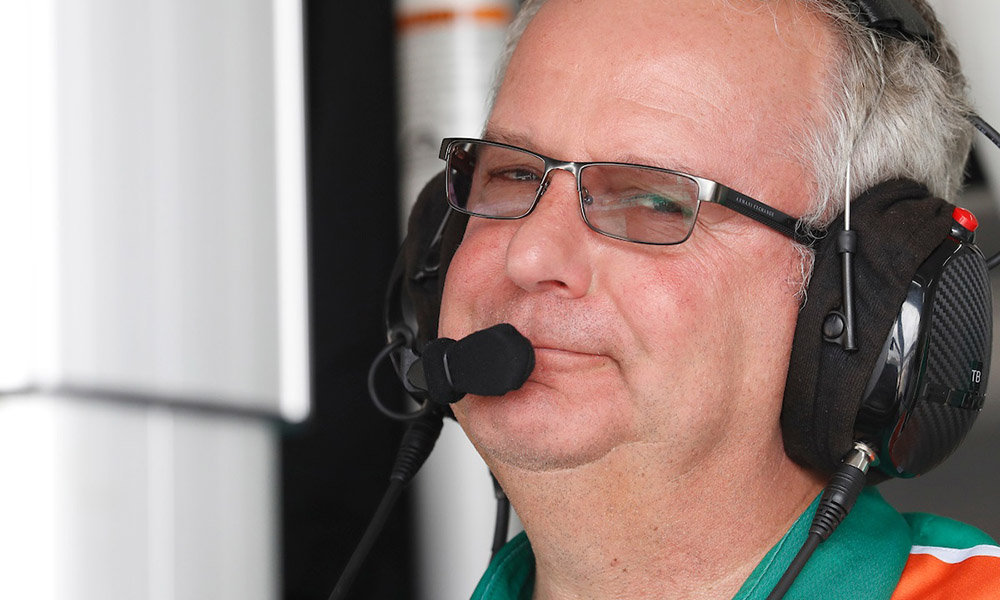
Photo: Mike Levitt/IMSA
What are some of your favorite memories and accomplishments as an engineer?
JB: “I have been very lucky to win many championships and major races in my time doing this. For me it’s much more about the people I got to experience those high points with and the process we went through to get the result.
“Winning the IMSA championship in 1995 at Team Scandia with my great friend, Fermin Velez was special. Being with Krohn Racing when Colin got his professional career started winning Daytona Prototype races as a 17-year-old was super special. The great people at Level 5 made my time there worth more than any wins we had, even though we had plenty. And now with the opportunity to engineer a high-level car Colin drives and win races is a dream come true.
“If I had to pick one race though it would be the Rolex 24 in 2005 when Colin was 16 years old (Team 16) and Travis, his 14-year-old brother was my data guy and strategist in the pit stand (don’t ask how we got him in the pits), my brother Cole was spotting and my wife, and Colin and Travis’ mother, Diane, was doing all the hard work. That was the best, just like the 100’s of kart and formula car races we did as a family.”
RL: “Multiple win seasons are my favorite memory.
“In 2007, we won four races and finished second in the championship with Karl Thomson and Billy Johnson. That was a crazy year with many of the wins happening as last lap passes.
“I’m also really proud of our Audi S3 program. We were back of the pack most of the time with that car, and then we won. Two wins out of that chassis was an accomplishment. It’s also special because that was the last car that we built at the shop, and we ended that season with a win at Laguna Seca and a podium at Road Atlanta.”
TB: “Well I’ve been doing this for a few years! When you go back to 1985-’86, my ‘freshman year’ with Penske back in the U.K., I was blessed to have been mentored by the likes of Teddy Mayer and Nick Goozee, giants of our business. Those early years provided fond memories of the hard but necessary lessons on how to go about the business of motorsports and engineering.
“Wins and championships are always good, but they come and go in time.
“I love building programs, watching them mature and if it all works out seeing the pride in it all coming together. It doesn’t matter how big or small the budgets; the process of team building is the same. Find the right group of individuals, give them a bit of direction and stand back and let them work.
“So this year with Juncos alone, we had the team’s first 24-hour race at Daytona, barely four months after the decision to build a DPi program. In September last year, we didn’t have a single nut or bolt allocated to build a DPi program. Maybe three or four of us had any sports car experience. And yet Ricky said, ‘We’re starting a DPi program and our first race is the Rolex 24 At Daytona in a few months…’
“We made it happen and ran the team’s first sports car race. That was cool…
“And the Indy 500 this year was not without its highlights either, to say the least!
“At this point in my career it’s that and also watching the next batch of young and hungry engineers thrive and help them, as I was, in this business.”




















